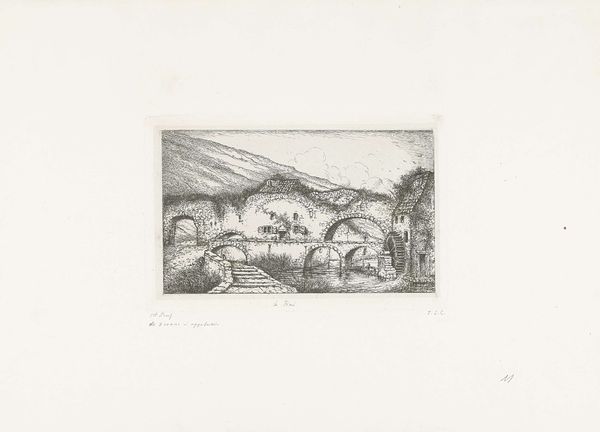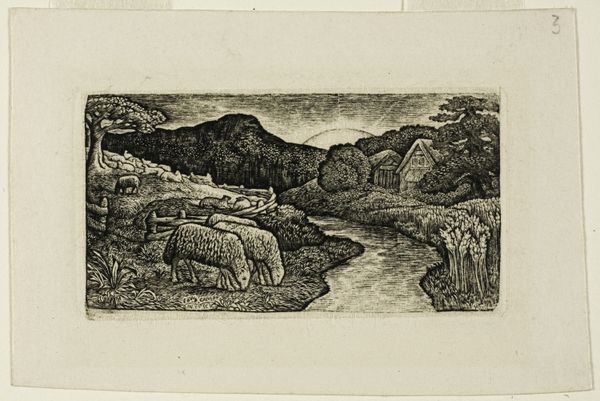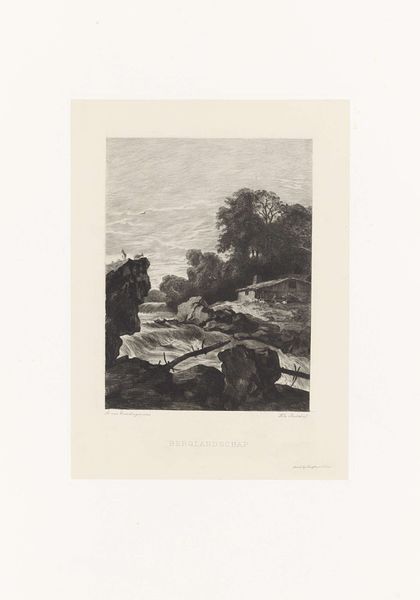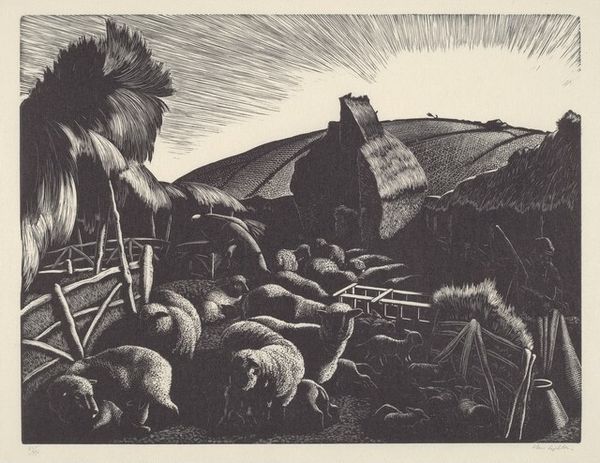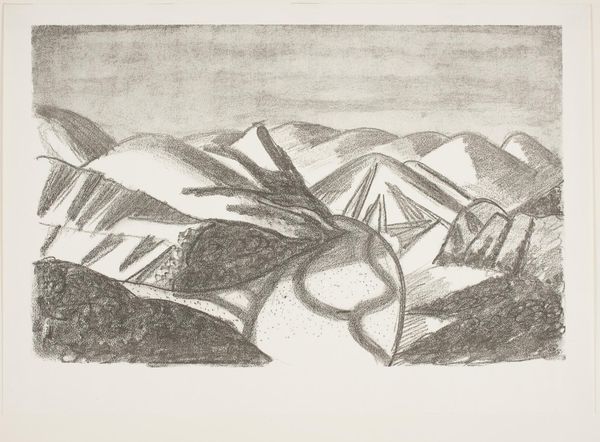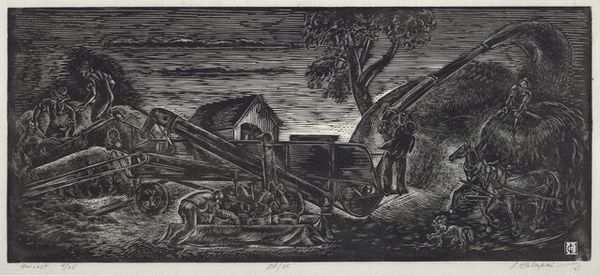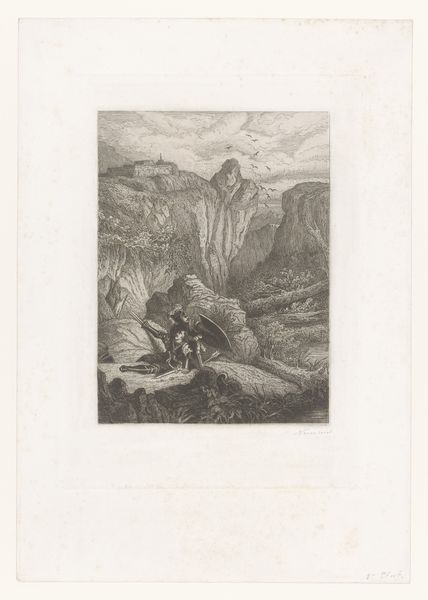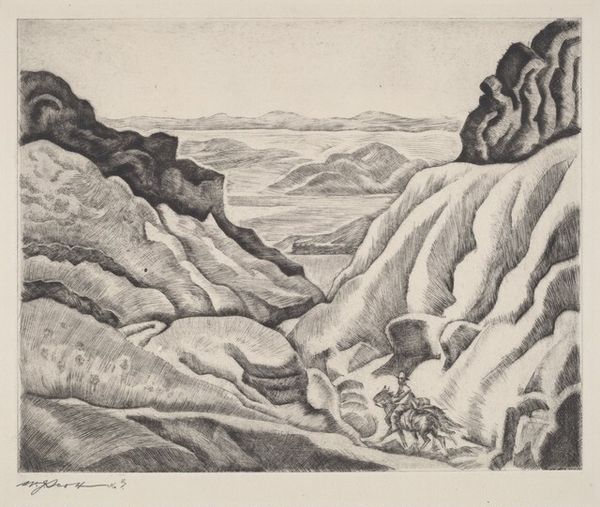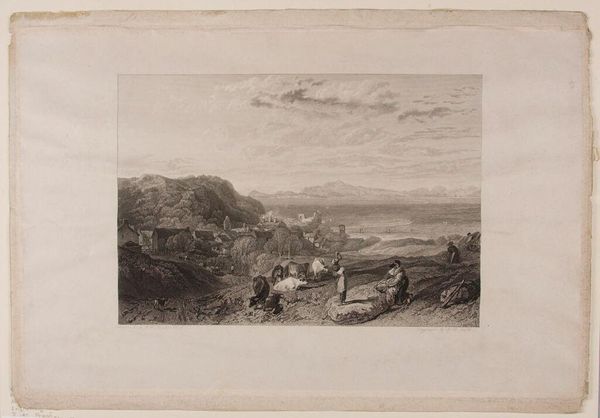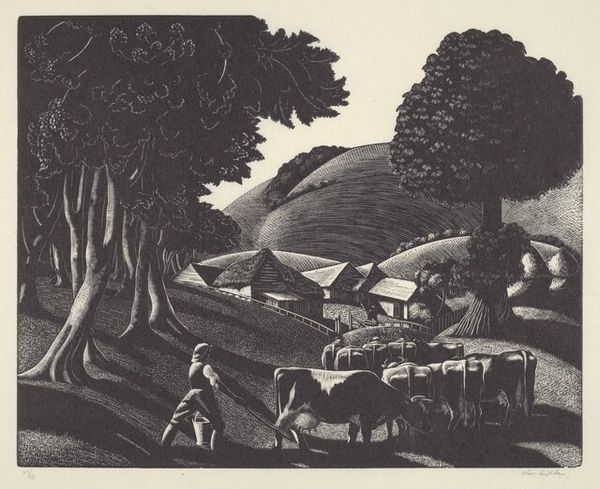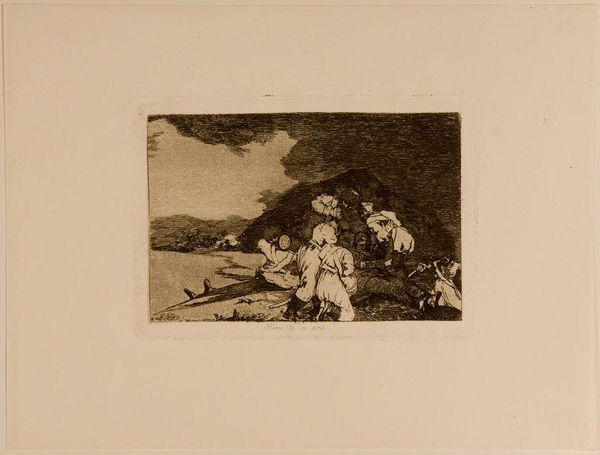
print, woodcut
# print
#
landscape
#
pencil drawing
#
woodcut
#
united-states
#
realism
Dimensions: 9 x 12 3/8 in. (22.86 x 31.43 cm) (image)
Copyright: No Copyright - United States
Editor: Here we have Wanda Gág's "Abandoned Quarry I," created in 1939. It's a woodcut, and the scene has a desolate feeling. What strikes me is the way everything seems to be either falling apart or simply left behind. What do you see in this piece? Curator: For me, this work resonates deeply with the historical context of the late 1930s in America. Think about the Dust Bowl, the lingering effects of the Great Depression, and the shifting landscape of rural America. How might those socio-economic and political forces have shaped Gág’s representation of abandonment? Editor: So, the image becomes more than just a depiction of a physical place? Curator: Precisely. Consider the title: "Abandoned Quarry I." The term "abandoned" carries immense weight. Abandoned by whom? Abandoned for what purpose? Gág isn't simply showing us a derelict place; she is offering a commentary on the relationship between industry, land, and the human cost of progress, or perhaps a lack thereof. The starkness of the woodcut further emphasizes this. Editor: That makes sense. I was initially focused on the textures and composition. But, if we view it as a social commentary... Curator: Yes? How might our understanding shift? Look closely. Who benefits from representing abandonment this way, and what feelings does it evoke in the viewer? What is the artist suggesting about those that remain? Editor: I hadn’t thought about it that way. I’m seeing the print's power differently now. Thanks. Curator: My pleasure. Considering art within a wider context gives it a far greater, relevant, and urgent voice.
Comments
No comments
Be the first to comment and join the conversation on the ultimate creative platform.
